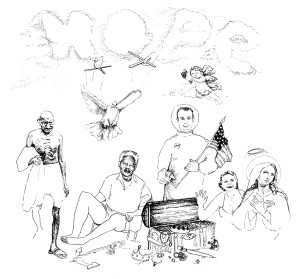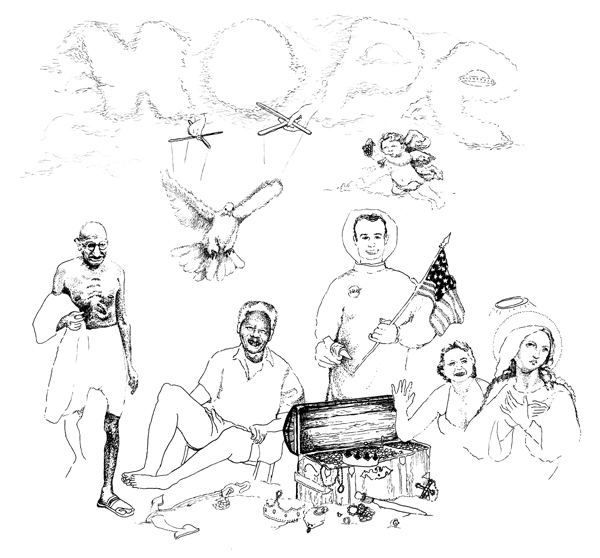HOPE: Elijah Burgher, Todd Chilton, Stephen Lacy, Elliot Layda, Teena McClelland, Nathaniel Robinson, and Joshua J. Van Wie
Friday, January 13th thru Saturday, February 18th
Opening recpetion: Friday, January 13th 6 – 9pm
Closing reception: Friday, February 10th 6 – 9pm
Teena McClelland film screening with Academy Records performance: Friday, February 17th 6 – 9pm
 Linda Warren Gallery is pleased to announce Hope. An innate human desire, hope functions as a belief for some and a mere flippant comment for others. Hope offers angles on why we hope, how we hope, and what our hope is found in. Why are we inclined to start hoping where our knowledge and power ends? Hope presents seven artists who hope for different reasons, in different ways, and for different things. When these differences are made explicit they reveal larger differences in our worldviews, which in turn allow us to examine our position.
Linda Warren Gallery is pleased to announce Hope. An innate human desire, hope functions as a belief for some and a mere flippant comment for others. Hope offers angles on why we hope, how we hope, and what our hope is found in. Why are we inclined to start hoping where our knowledge and power ends? Hope presents seven artists who hope for different reasons, in different ways, and for different things. When these differences are made explicit they reveal larger differences in our worldviews, which in turn allow us to examine our position.
Whether conversing, viewing, or reading we are dealt unsure abstractions we tend to easily agree on. This prevents confrontation or embarrassment in finding out that we were wrong or at odds with one another. There is an illusion of reconciliation, which conceals the incongruity of our beliefs. Things we concur on out of politeness or fear could be the most important things to dispute. What happens when we stop agreeing and start raising questions?
How could we possibly begin to voice or give form to something as abstract as hope? Hope, an identified un-definable factor, is something we all rely on in attempts to attach meaning to our lives; a sincere desire that pulls us through life, but often goes unquestioned. Hope may be a manifestation of our hope in the possibility of common understanding, even as we tend to find that such agreement is actually buttressed by false consensus. Why bring these ideas into an art context, and why now? Art’s “silence” on the subject of its own meaning forces the openness that requires from the viewer either a decision, or a decisive admission of uncertainty. Hope is riskier than cynicism at this moment culturally and historically. Taking a hopeful position demands our vulnerability in a time when discussing beliefs is taboo. While in current offerings, artists generate work inside a comfort zone for mainstream acceptance, Hope is geared towards making leaps without assurance. Hope questions its own premises by addressing a range of realities that provide additional perspectives. The hope of this show is that the work forces not interpretation but another decision, possibly towards clarification.
